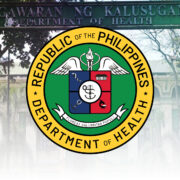Beyond drunk driving: Why alcohol control must be a public health priority

In the Philippines, conversations about alcohol policy almost always revolve around drunk driving and violence. Our initial analysis of local alcohol control ordinances reveals that many are built on this lens, framing alcohol regulation primarily as a tool for maintaining public safety and preventing road incidents or crime.
While these are urgent concerns, they often overshadow alcohol’s deeper, slow-burning impact on health. Beyond the immediate dangers of crashes and violence, alcohol is a silent driver of chronic diseases, mental health disorders, and other long-term harms. Data show that alcohol caused more than 24,500 deaths in the Philippines in 2021, roughly 3.1 percent of all deaths that year.
In 2021, at least 3,500 deaths from cancers and about 5,800 deaths from cardiovascular disease in the Philippines were attributable to alcohol consumption. In terms of road injuries and deaths, at least 1,000 were attributable to alcohol consumption. These figures reveal that alcohol harms extend far beyond the roads and the immediate aftermath of a single night’s drinking.
Additionally, economic analyses underline the scale of the problem. A 2019 government estimate placed the annual economic cost of alcohol harms at about P200 billion, and more recent analyses combining alcohol, tobacco, and vaping harms estimate combined annual costs exceeding P1 trillion for 2021, highlighting their significant fiscal and productivity impacts on the country.
Fortunately, public opinion in the Philippines is shifting toward stronger, health-centered action. A national poll conducted by Vital Strategies finds that almost nine out of 10 Filipinos consider alcohol consumption to be a problem, seven out of 10 are concerned about children drinking, and 70 percent agree that increased taxes would reduce consumption.
It is time to shift from a criminal justice–oriented approach to one anchored in comprehensive public health. In Nordic countries, for example, they recognize that alcohol harms far outweigh the potential economic benefits, and center their policies on limiting its negative effects. They restrict alcohol marketing, impose taxes and enforce stricter pricing policies, and limit alcohol availability.
These strategies have been proven by several years of research and are recognized by the World Health Organization’s SAFER Framework. The Philippines can translate these strategies by (1) raising excise taxes, (2) mandating graphic health warnings on alcohol products, (3) banning alcohol advertising, promotions, and sponsorships, (4) expanding primary care screening, and (5) strengthening public health campaigns.
We must move toward proactive, health-driven strategies. The Department of Health, lawmakers, LGUs, and health advocates should seize this window of opportunity to elevate alcohol control as a public health priority on par with tobacco regulation. Finally, designating September as Alcohol Harms Awareness Month will offer a timely platform to spotlight the full spectrum of alcohol-related harms, build public awareness, and mobilize support for stronger policies. By broadening our frame, we don’t just prevent injuries. We protect lives, long-term.
Reiner Lorenzo Tamayo and Bill Whilson Baljon,
University of the Philippines Manila

















The environmental junks of Christmas